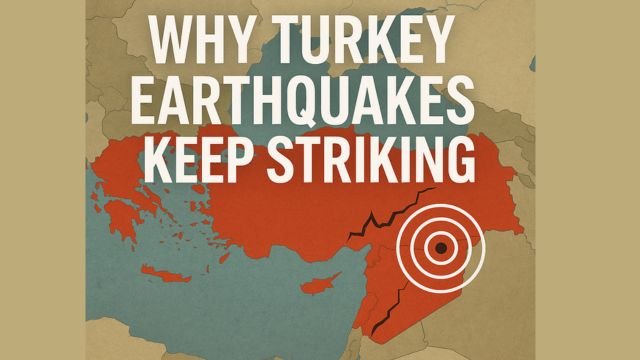When the ground trembled again near Sındırgı, Balıkesir on Monday night, Turkey was reminded once more that its earthquake story is far from over. A magnitude 6.1 quake, shallow and strongly felt, startled residents from Izmir to Istanbul. For many, the shaking was not a surprise. It was a repeat. Just months earlier, another 6.1 tremor hit the same area. And just a few months before that, the Marmara Sea shook with a 6.2 quake near Istanbul. Turkey earthquakes are not rare. They are frequent, sometimes clustered, and they are always a test of what we’ve done to prepare.
The October 27 earthquake was centered near Sındırgı at a depth of around six kilometers. That’s considered shallow in seismology, which means stronger shaking on the surface. Buildings swayed. Alarms were triggered. People ran outside, some barefoot, some in pajamas, many with flashlights in hand. Officials later confirmed three structures collapsed, all of them previously damaged in past events. Over 20 people were injured, mostly from panic or falls, not from direct structural failure. Rain followed, and public buildings opened up for shelter. The scene was tense, but not chaotic. Still, it left residents wondering what’s next, and how many more hits this region can take.
What makes this situation more concerning is the context. The August 10 earthquake, also at 6.1 magnitude and also near Sındırgı, resulted in the death of one person and brought down at least 16 buildings. Two mosque minarets collapsed. Aftershocks lasted for days. Residents stayed outside in parks and public squares long after the main shock ended. Those memories were still raw when this week’s tremor arrived. The emotional aftershocks might outlast the geological ones.
Zooming out, you land on April 23, 2025. That was the day a 6.2 magnitude quake struck beneath the Marmara Sea, just south of Istanbul. Hundreds were injured. Many more were rattled. That event didn’t just cause damage, it woke up Istanbul’s earthquake anxiety. The city of sixteen million sits just beside the North Anatolian Fault, one of the most active and dangerous fault systems in the world. The April rupture showed that the segment near Istanbul is still very much alive.
Put all these together and you get a worrying pattern. Turkey earthquakes are not just one-off shocks. They are often part of sequences. Moderate to strong events in one region can increase stress on nearby faults. Aftershocks can keep buildings at risk long after the first wave of shaking passes. That’s exactly why Turkish authorities keep pushing a familiar message: avoid damaged buildings, expect more tremors, and check your gas lines. These aren’t just safety tips, they’re survival strategies.
The risk is not just about geography. It’s also about buildings. Turkey has two giant fault systems. The North Anatolian Fault cuts across the country from east to west, ending beneath the Marmara Sea. The East Anatolian Fault, the one responsible for the catastrophic 2023 Kahramanmaraş earthquake, runs along the southeast. You can’t move these faults. What you can do is prepare the places people live.
That’s where the real challenge lies. A recent study found that roughly 60% of Turkey’s housing stock was built before the modern building codes introduced after the deadly 1999 İzmit earthquake. That means millions of homes are vulnerable. In Istanbul alone, over 600,000 residential units need to be retrofitted or replaced. That’s not a small fix. It’s a national mission.
The October earthquake is part of a string of tremors that highlight both the geological reality and the structural vulnerability Turkey faces. When buildings collapse after a 6.1 event, that’s not about how strong the quake was. It’s about how weak the structures were to begin with. Many of the recent collapses happened in buildings already flagged as unsafe. This means Turkey’s disaster risk is something you can actually measure street by street.
For residents in western Turkey and the Marmara region, the safest step forward is action. Start with your building. Learn what year it was built, whether it complies with post-1999 codes, and whether it has features that make it more or less likely to withstand shaking. Soft floors, open garages, and unreinforced masonry are all red flags. If you rent, ask your landlord. If you own, get an engineer’s opinion. Even a basic assessment can make a difference.
Inside your home, small steps help too. Secure tall furniture to walls. Add safety film to glass. Keep a flashlight and shoes by your bed. Know where your gas shutoff valve is. And most importantly, practice what to do when shaking starts. Drop, cover, and hold on. Teach it to your kids. Run drills. Make it automatic.
Local governments also have a role. After the October event, officials opened schools and public buildings for those who feared returning home. That’s an important emergency response. But the bigger need is proactive. We need more retrofitting programs, better data on vulnerable buildings, and stronger enforcement of existing codes.
The memory of the 2023 earthquakes in southeast Turkey is still vivid. Over 50,000 lives were lost. Many of those deaths were blamed not on the shaking itself, but on construction that could not hold. That should not be forgotten.
The recent wave of Turkey earthquakes, especially around the Marmara region, is a warning. It’s not fear mongering. It’s just the way tectonic plates work. You can’t stop the fault from moving. But you can change how we live on top of it.
CycloneRadar will continue tracking these events. We’ll follow aftershock sequences from Sındırgı, we’ll update maps when new fault segments rupture, and we’ll report when new science updates Istanbul’s risk profile. But for now, if you live in Turkey, especially in cities with older housing, use this moment to fix one thing. Bolt a bookcase. Check your gas. Teach your kids what to do. Turkey earthquakes will keep coming. Your preparation can shape the outcome.


